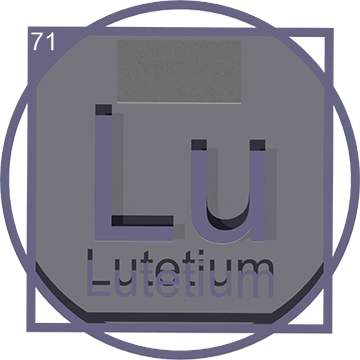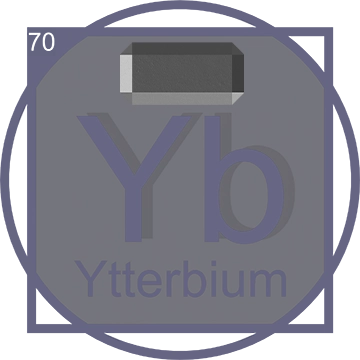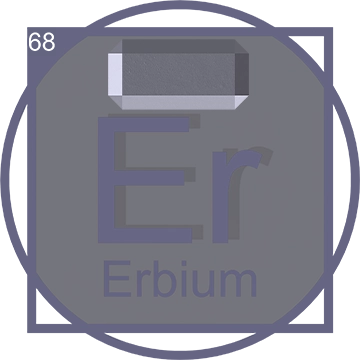Unveiling Lutetium: A Key Player in Modern Technology and Science
Introduction: Lutetium, often overshadowed by more well-known elements, plays a crucial yet subtle role in both the scientific world and technological advancements. As the last member of the lanthanide series in the periodic table, Lutetium's unique properties make it a valuable resource in various high-tech applications. This article explores the fascinating aspects of Lutetium, from its discovery to its applications in modern technology.
The Discovery of Lutetium

Lutetium, element number 71 on the periodic table, was first identified in 1907 by multiple scientists working independently. French chemist Georges Urbain and Austrian mineralogist Baron Carl Auer von Welsbach both played pivotal roles in its discovery. They achieved this through the meticulous separation of a substance then known as "ytterbia" into two distinct components, one of which was Lutetium
The element was christened 'Lutetium' after 'Lutetia,' the ancient Latin name for Paris, reflecting its discovery in a city known for scientific advancements. This discovery was a crucial development in the study of rare earth metals, highlighting Lutetium's unique properties and its place within this group of elements.
Chemical and Physical Properties of Pure Lutetium

Pure Lutetium exhibits several unique physical and chemical properties that set it apart from other elements in the periodic table. Not only does it have the highest melting and boiling points among the lanthanides, but it is also remarkably stable in air compared to its group counterparts. Its electron configuration, which concludes with 4f145d16s2, significantly influences its chemical behavior and reactivity, making it an element of interest in both basic and applied science. Moreover, Pure Lutetium’s dense and hard characteristics make it ideal for specific industrial applications requiring materials that withstand extreme conditions.
Scientific Research and Applications of Lutetium

The primary uses of Lutetium revolve around its capacity as a catalyst in petrochemical refining, where it helps in cracking hydrocarbons in oil products.
Its high density and ability to absorb neutrons also make it valuable in nuclear technology, particularly in detectors and neutron absorbers. In addition, Lutetium is used in medical imaging and cancer treatment, exploiting its radioactive isotopes for targeted therapy.
Technological Applications

In technology, Lutetium is used in LED lights, electronic devices, and high-refractive index glass. Its compounds are particularly valuable in making phosphors that are used in various optical systems, including camera lenses and telescopes. The rare and efficient characteristics of Lutetium enhance the performance of many devices, making it an essential material in the advancement of optical technologies.
The Future of Lutetium
The future potential of Lutetium in science and technology continues to expand. Researchers are exploring its use in quantum computing materials due to its unique electron configuration. Moreover, its role in renewable energy solutions, particularly in photovoltaic cells and as a catalyst in hydrogen production, positions Lutetium as a critical element in the transition to green energy technologies.
Production and Mining of Lutetium
Lutetium is primarily obtained from minerals such as monazite and bastnäsite, which contain small amounts of all rare earth metals and are the main sources of this rare element. It is extracted through a complex process involving crushing the mineral, followed by a series of chemical reactions to separate Lutetium from other elements. Significant mines producing these minerals are found in China, the United States, Australia, and India.
Typically, Lutetium is mined alongside other rare earth elements such as ytterbium and erbium. These elements are often co-located within the same mineral deposits and are extracted together before undergoing further separation processes.
Current Applications of Lutetium

In modern technology, lutetium is utilized in a variety of applications due to its unique properties. It is used in PET scans within the medical field due to its effectiveness in emitting gamma rays. Lutetium-based compounds are also employed in advanced cancer treatments, targeting tumor cells with minimal damage to surrounding healthy tissue. Additionally, Lutetium is used in the manufacturing of catalysts, electronic devices, and as dopants in laser materials.
Future Potential of Lutetium

The future of Lutetium in science and technology appears promising. Research is ongoing into its potential use in quantum computing, where Lutetium's atomic properties could be used to develop new types of qubits. Scientists are also exploring its application in renewable energy technologies, particularly in the development of more efficient photovoltaic cells. As the demand for high-performance materials increases, Lutetium's role in various industries is expected to expand, leading to more innovative applications.












